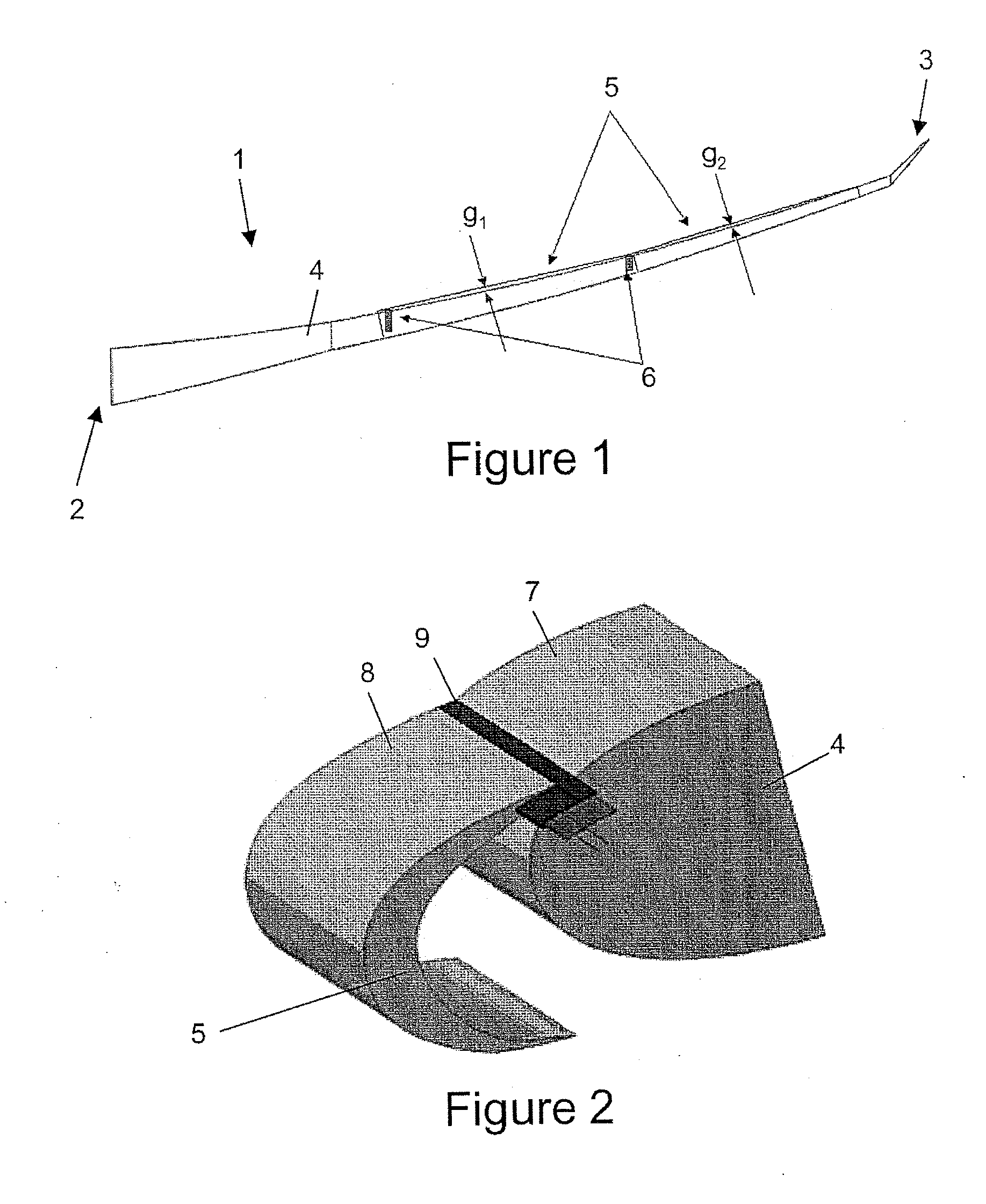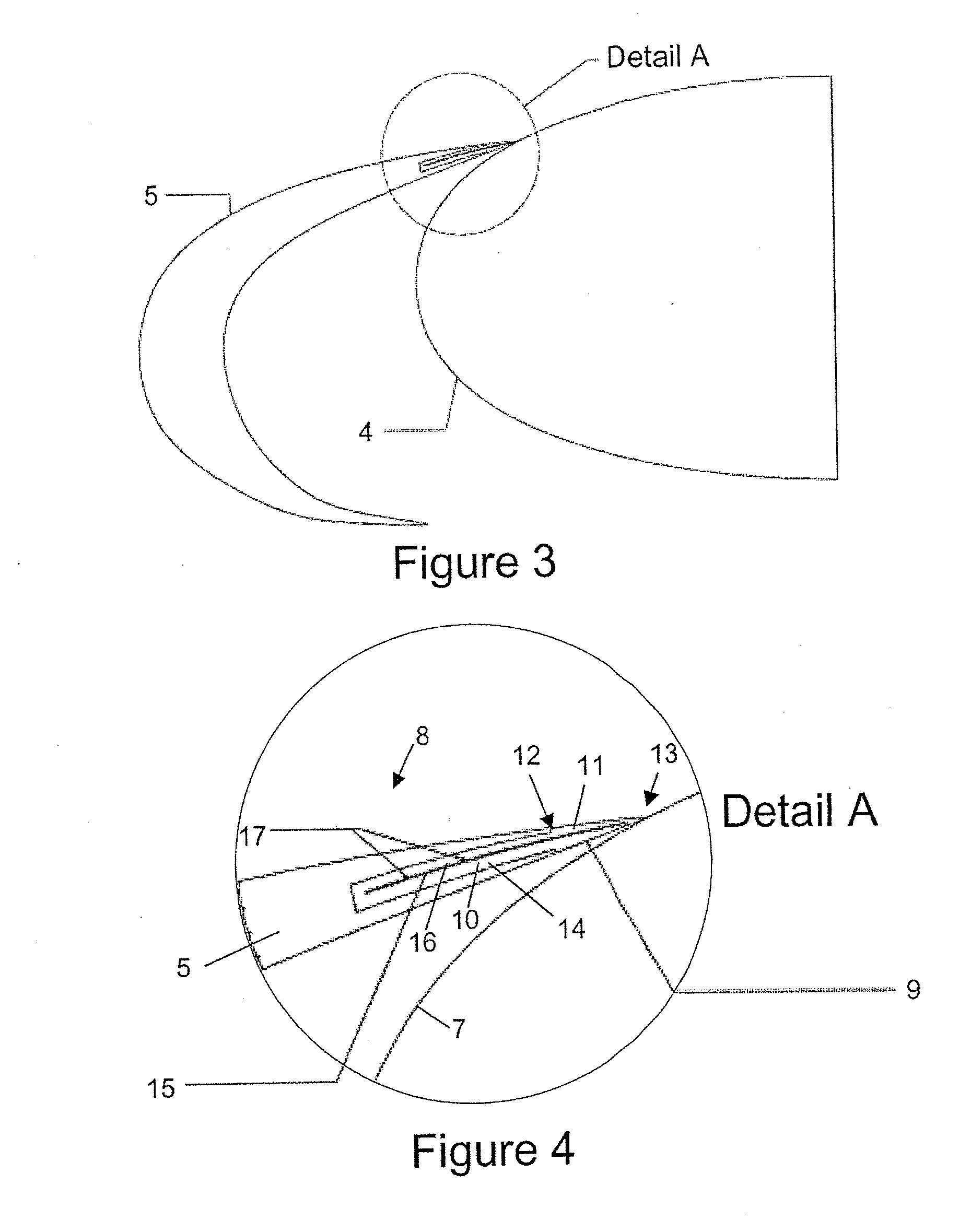Blade seal
a technology of blades and seals, applied in the direction of aircraft components, wing adjustments, aircraft control, etc., can solve the problems of small gap in takeoff configuration, increase drag, noise and fuel consumption, and can produce several hundred kilograms of drag overall
- Summary
- Abstract
- Description
- Claims
- Application Information
AI Technical Summary
Benefits of technology
Problems solved by technology
Method used
Image
Examples
Embodiment Construction
)
[0028]As shown in FIG. 2, the fixed aerofoil portion 4 has a D-nose panel 7 which forms the aerodynamic profile of the leading edge of the fixed wing portion 4. The slat 5 has a trailing edge 8 having a resilient blade seal 9 mounted thereto. The blade seal 9 is adapted to seal between the trailing edge 8 of the slat 5 and the D-nose panel 7 of the fixed aerofoil portion 4 as the slat moves between its retracted and extended positions. The slat 5 is shown in its extended position in FIG. 2.
[0029]FIG. 3 shows a schematic cross section view through the leading edge of the fixed wing portion 4 and the slat 5. FIG. 4 shows detail A of FIG. 3 of the trailing edge 8 of the slat 5 and the engagement of the blade seal 9 with the D-nose panel 7. The blade seal 9 includes an embedded portion 10 and an exposed portion 11. The embedded portion 10 extends into the structure of the slat trailing edge 8. The exposed portion 11 extends beyond the trailing edge of the slat structure and has a gener...
PUM
 Login to View More
Login to View More Abstract
Description
Claims
Application Information
 Login to View More
Login to View More - R&D
- Intellectual Property
- Life Sciences
- Materials
- Tech Scout
- Unparalleled Data Quality
- Higher Quality Content
- 60% Fewer Hallucinations
Browse by: Latest US Patents, China's latest patents, Technical Efficacy Thesaurus, Application Domain, Technology Topic, Popular Technical Reports.
© 2025 PatSnap. All rights reserved.Legal|Privacy policy|Modern Slavery Act Transparency Statement|Sitemap|About US| Contact US: help@patsnap.com



